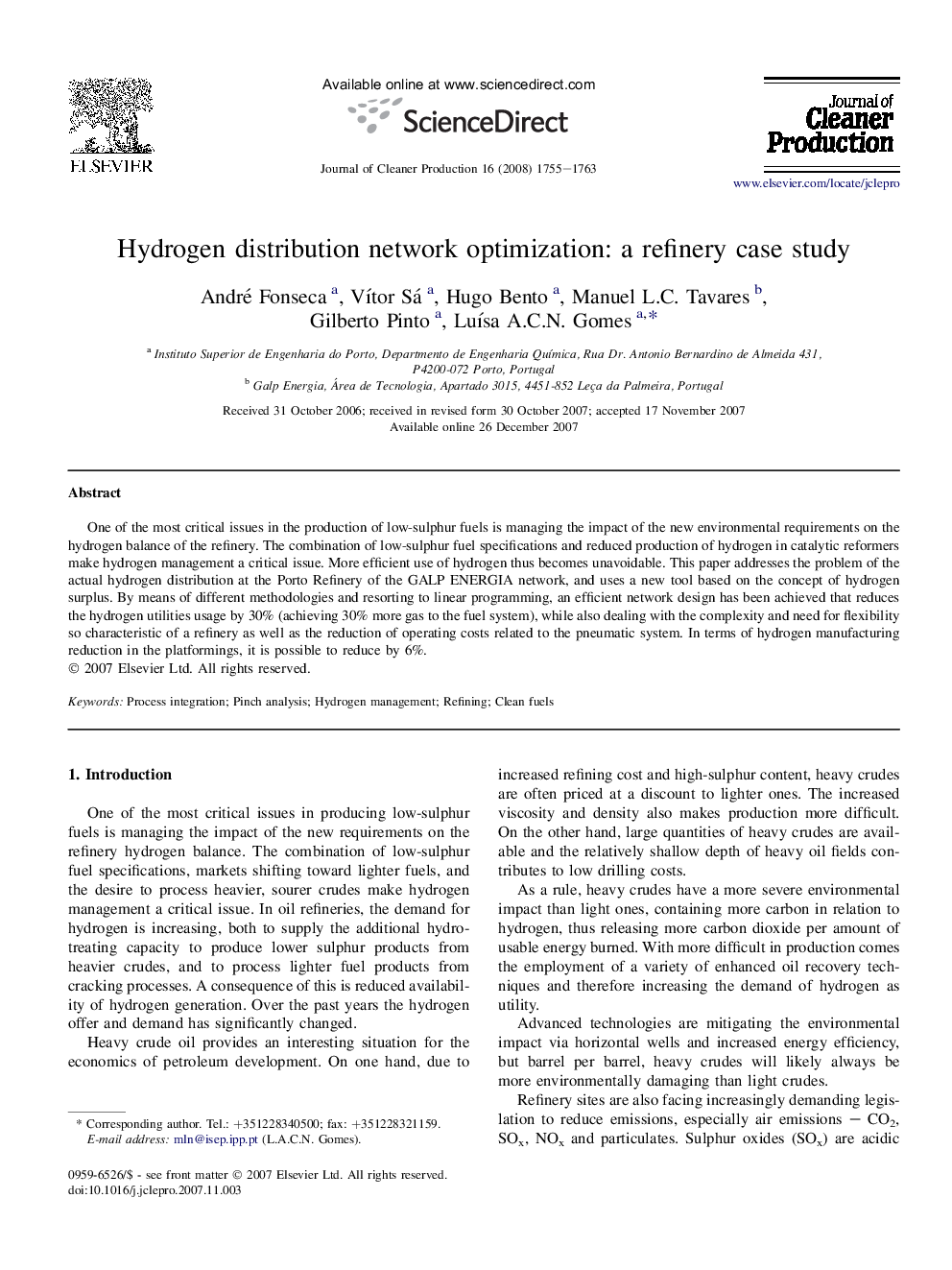| Article ID | Journal | Published Year | Pages | File Type |
|---|---|---|---|---|
| 1746711 | Journal of Cleaner Production | 2008 | 9 Pages |
One of the most critical issues in the production of low-sulphur fuels is managing the impact of the new environmental requirements on the hydrogen balance of the refinery. The combination of low-sulphur fuel specifications and reduced production of hydrogen in catalytic reformers make hydrogen management a critical issue. More efficient use of hydrogen thus becomes unavoidable. This paper addresses the problem of the actual hydrogen distribution at the Porto Refinery of the GALP ENERGIA network, and uses a new tool based on the concept of hydrogen surplus. By means of different methodologies and resorting to linear programming, an efficient network design has been achieved that reduces the hydrogen utilities usage by 30% (achieving 30% more gas to the fuel system), while also dealing with the complexity and need for flexibility so characteristic of a refinery as well as the reduction of operating costs related to the pneumatic system. In terms of hydrogen manufacturing reduction in the platformings, it is possible to reduce by 6%.
